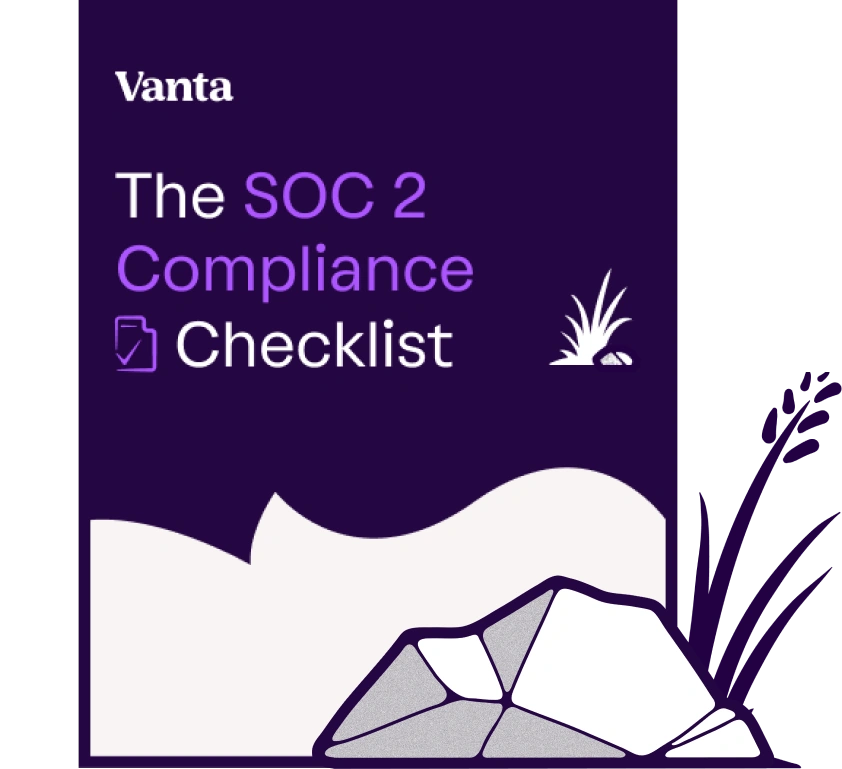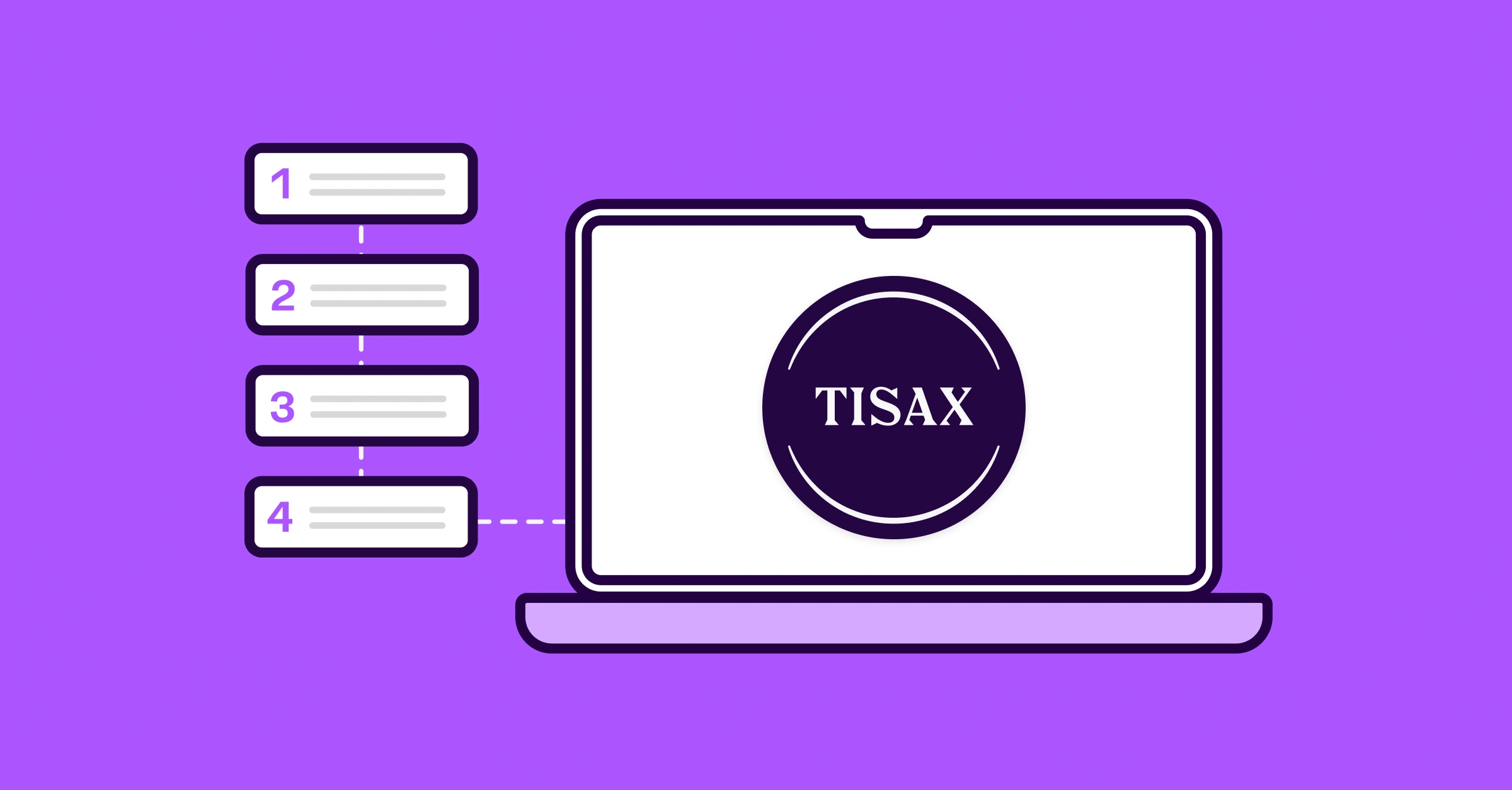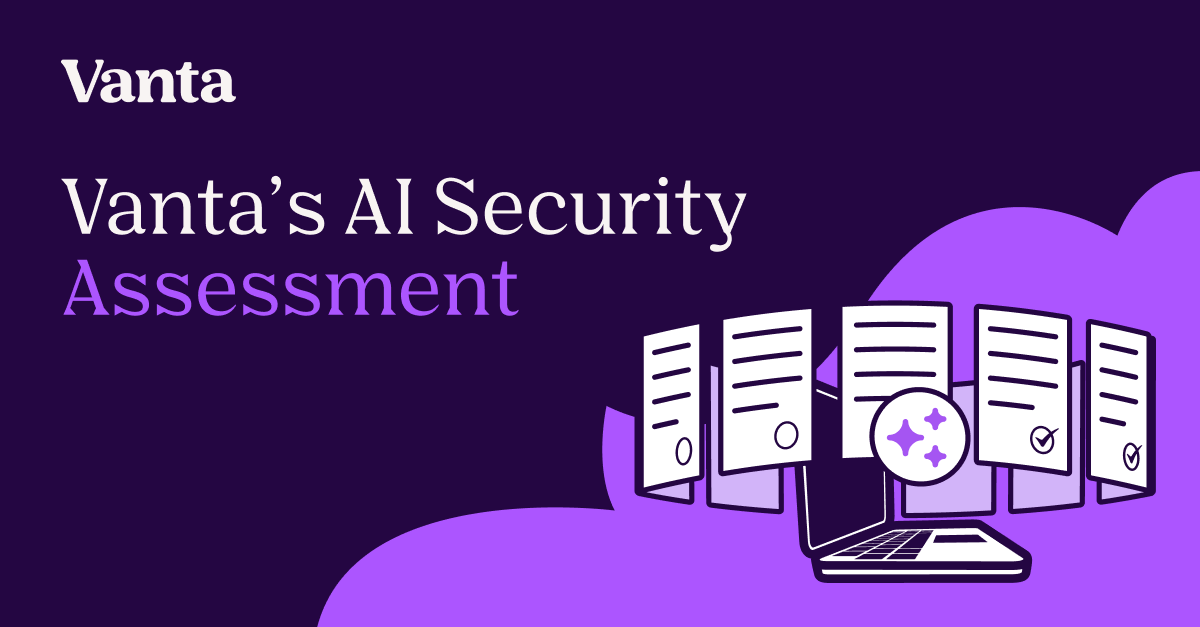Share this article
.png)
9 AI risks that could impact your organization—and how to mitigate them
Accelerating security solutions for small businesses Tagore offers strategic services to small businesses. | A partnership that can scale Tagore prioritized finding a managed compliance partner with an established product, dedicated support team, and rapid release rate. | Standing out from competitors Tagore's partnership with Vanta enhances its strategic focus and deepens client value, creating differentiation in a competitive market. |
As AI becomes more user-friendly and performance-focused, organizations are increasingly adopting it into their systems to streamline elaborate workflows. However, the rapid pace of adoption means that teams often implement AI models before fully mapping the security and compliance implications that they bring.
According to Vanta’s State of Trust Report, more than 50% of organizations view AI risks as a growing concern today. In this article, we’ll discuss nine of the most pressing AI-influenced risks that you should watch out for—and share some practical steps to mitigate them.
9 AI risks and vulnerabilities to watch out for [With mitigation tips]
While AI introduces a wide range of threats, executives should map those that directly impact performance, compliance, and security. AI risks like explainability and bias often dominate the conversation from regulatory and academic perspectives. While they are relevant, you must also address other critical risks with equal focus, such as shadow AI, model drift, and data poisoning.
{{cta_withimage28="/cta-blocks"}}
Here are the nine key AI risks and vulnerabilities that should be on your radar:
- Sensitive data exposure
- Expanded AI attack surface
- Unclear accountability chains
- Lack of decision-making transparency in AI
- Skewed output and training bias
- Limited oversight of shadow AI
- Model drift and degradation
- Third-party risks (external AI risks)
- Uncertain AI compliance landscape
1. Sensitive data exposure
AI tools often process massive volumes of information, which creates additional exposure points for sensitive or classified data. This increases the risk of unauthorized access, whether through misconfigurations, poor data handling, or malicious inputs.
Depending on your industry, a breach can have significant consequences. Highly regulated sectors typically impose severe penalties for major violations, including fines, corrective actions, or legal escalation.
You can reduce the risk of data exposure by building and implementing strict role-based access controls (RBAC) for your AI-influenced systems. Another strategy is to adopt the minimum necessary principle, which entails only allowing AI systems to access the minimum data to function effectively. Maintain and review access logs so that anomalies are flagged early.
2. Expanded AI attack surface
Deploying AI systems inherently expands your attack surface by introducing new components, connections, and data flows you need to monitor and secure. Additionally, AI systems evolve rapidly, so other vulnerabilities can emerge faster than you run traditional patching or similar cycles.
The risk is further compounded because AI systems may have limited or imperfect training environments. Security and compliance teams often don’t have enough resources or time to simulate every edge case, which can leave exploitable vulnerabilities unaddressed for a long time.
You can address these issues by integrating AI security into your existing vulnerability management programs and conducting frequent, model-informed risk assessments. This can help you upgrade your safeguards so that they’re aligned with current AI models and use cases.
3. Unclear accountability chains
Many AI systems, especially agentic AI, are designed to make autonomous decisions to drive repetitive workflows. These systems are configured to learn from environmental data to guide their choices, but there’s a serious risk that those decisions may inadvertently violate regulations or internal policies.
What happens next is an accountability issue. With humans, policy violations have a clear accountability line and consequences. However, when an AI-made decision causes the violation, three possible parties can be held responsible:
- The AI model
- Developers or vendors
- The deploying organization or its personnel
You can avoid this ambiguity by designing a clear accountability matrix early in the AI lifecycle. Assign oversight roles and have policies to document explainability requirements so that the decisions can be traced back to a responsible party.
4. Lack of decision-making transparency in AI
AI systems often operate as black boxes—occasionally, even the developers don’t understand the flow of logic behind certain AI decisions. The lack of transparency, while rare, can often undermine explainability, which is a core requirement for regulations such as the EU AI Act.
Unclear decision-making frameworks also erode trust in the AI system and may make security reviews and updates tricky, especially if teams can’t reliably detect potential vulnerabilities.
To address this, implement strictly defined audit processes to track how your systems are trained, deployed, and used. Document your findings in a centralized data repository to create a single, verifiable source of truth. This allows you to demonstrate your model lineage, data provenance, and security controls, making your AI systems transparent and audit-ready.
{{cta_webinar6="/cta-blocks"}}
5. Skewed output and training bias
AI tools heavily rely on training data as the foundation for their decision-making processes. If the data is incomplete, unbalanced, or historically biased, the outputs will be less reliable. Skewed outcomes can be a serious risk in certain scenarios, such as:
- Hiring tools discriminating against specific groups
- Medical AI systems misdiagnosing due to gender-based symptom differences
- Credit scoring AI downgrading the creditworthiness of applicants from certain zip codes due to historical lending biases
Develop processes to integrate human validation for your training data and AI outputs, not just once but at multiple checkpoints throughout the AI lifecycle. You can also explore continuous bias monitoring (if your resources allow) through regular adversarial testing and other stress-testing mechanisms.
6. Limited oversight of shadow AI
Shadow AI is a critical risk that organizations leveraging AI must understand and appropriately address, but sometimes may overlook.
As AI becomes more accessible, users can adopt new tools at a growing pace without needing training or expertise. This can lead to your stakeholders implementing new systems without notifying IT and security teams—hence the term “shadow AI.”
While such AI tools may boost productivity, they could also introduce new vulnerabilities and governance gaps that increase the risk of non-compliance. For instance, if a cloud-based AI application doesn't go through the usual vetting and configuration checks, there’s no way to ensure that its data handling practices align with internal and regulatory standards.
You can reduce the risk of shadow AI by cataloging all of your AI tools and setting up a governance framework to implement effective security mechanisms such as AI acceptable use policies, AI usage guardrails, AI usage monitoring, and AI training centered around the responsible use of AI.
7. Model drift and degradation
Once deployed, AI models may start to drift, which means their accuracy or quality of outputs may degrade over time. This is typically caused by the misalignment between training data and actual production use cases. Training data can also become outdated over time, leading to incorrect predictions and decisions.
One example of AI drift is security monitoring tools that use a specific version of a risk management framework (RMF) as training data. Once the RMF goes through version updates, the AI tool becomes obsolete until it is retrained and stress-tested.
Some degree of model drift is inevitable, but you can minimize this issue by monitoring your AI tools (human-assigned), setting drift detection thresholds, and configuring alerts to identify deviations early. This allows you to retrain models with updated datasets and fine-tune them before performance gaps widen.
8. Third-party risks (external AI risks)
AI risks aren’t limited to those introduced by your own models. Many organizations rely on external AI products and services, pre-trained models, or vendor-provided APIs that they can’t directly control. You need to account for those inherited risks as part of your third-party risk management strategy.
However, mitigating third-party AI risk can be challenging since you don’t have detailed insight into their security, which can leave high-priority threats unaddressed.
When reviewing potential new vendors, make sure that you address AI risks as part of your questionnaires and onboarding procedures. You can download Vanta’s AI Security Assessment questionnaire as a baseline for standard vendor reviews covering areas like governance, data privacy, risk, and incident response. You should also establish SLAs around areas like AI incident response and drift management.
{{cta_withimage28="/cta-blocks"}}
9. Uncertain AI compliance landscape
AI is a fast-evolving technology, which is why the current AI regulatory space is still in a state of flux. The regulations that already exist are frequently updated to reflect new risks.
As a result, the risk mitigation measures you implement may become outdated quickly. The good news is that robust regulations like the EU AI Act have already been introduced. You can align with its requirements alongside the newly introduced ISO 42001 standard, and establish a stable foundation to prove safe and responsible AI use.
To stay ahead, you may also want to continuously monitor developments in the jurisdictions that impact you, as well as develop an AI compliance roadmap that factors in adaptability by defining pivot plans and adjustment timelines.
3 proactive tips to minimize AI risks
We’ve already discussed the mitigation strategies for the AI risks we outlined so far. Here are some additional tips and security practices you can explore:
- Set up an AI-informed incident response policy (IRP): Traditional IRPs are not prepared for AI failures and misuse. Bring your security and compliance teams together to brainstorm IRP workflows tailored to your AI risk landscape, such as model errors, third-party failures, hallucinations, and the generation of harmful content.
- Provide stakeholder training for safe and ethical AI use: 48% of organizations cite ethical AI use as their top concern. So, train teams on responsible AI use, awareness of shadow AI, and internal policies.
- Establish a cross-functional AI governance committee: When reviewing AI risks, create a team with different departmental stakeholders to get multiple perspectives and surface potential blind spots.
As AI risks evolve, manually tracking security measures and maintaining scattered evidence streams will drain time and resources, as well as pull your security and IT teams away from priority tasks. Consider using a purpose-built AI compliance automation tool like Vanta to streamline your security operations.
Manage AI risks and security workflows with Vanta
Vanta is an automation-enabled trust management platform that helps organizations confidently demonstrate that they’re using AI systems securely and responsibly. We offer resources, templates, and in-house guidance to support compliance with relevant AI frameworks and regulations, including ISO 42001, NIST AI RMF, and the EU AI Act.
Vanta’s AI compliance product comes with various helpful features, such as:
- Faster responses to AI-related security questions with Questionnaire Automation
- Access to Vanta’s public Trust Centers
- Continuous monitoring and automated alerts
- Control mapping to reuse controls from overlapping AI-related frameworks
- Automated evidence collection powered by 400+ integrations
Vanta offers out-of-the-box support for 35+ leading frameworks and regulations, and you can also build your own custom frameworks to complement your organization.
Schedule a custom demo today for tailored automation insights.
{{cta_simple34="/cta-blocks"}}





FEATURED VANTA RESOURCE
The ultimate guide to scaling your compliance program
Learn how to scale, manage, and optimize alongside your business goals.
%201%20(1).svg)













.png)






.png)








.svg)
.svg)
.png)
.png)
.png)